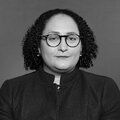In Washington, politics, as they say, can lead to strange bedfellows. And political friendships can span the branches of government. For instance, Justice Scalia and Vice President Cheney were hunting buddies. But this friendship later raised eyebrows and requests for recusal when a case involving Cheney came before the Supreme Court. Friendships can come back to haunt justices.
I started my career as an attorney at Arnold & Porter. I knew that the firm started as Arnold, Fortas & Porter. The “Fortas” was Abe Fortas, the one-time Supreme Court Justice who left the high court after just 4 years in ignominy. No one would really talk about Fortas at the firm.
And now I wonder if his cautionary tale might resonate for the Court’s newest member, Justice Neil Gorsuch, who has come under criticism for his relationships with sitting Senators. As Charles P. Pierce wrote in Esquire of a trip Justice Gorsuch took with Senate Majority Leader Mitch McConnell in Kentucky, “don’t even consider the propriety of a Supreme Court Justice being paraded around a state like a prize trout.”
What can we learn today from Justice Fortas’s fate? A lot. Abe Fortas’s career as a lawyer could not have had a more promising start as he graduated second in his class from Yale Law School and was promptly hired by Yale to teach. He worked as a lawyer throughout the expanding administrative state. And he was appointed by the Supreme Court to represent Clarence Gideon in the historic case of Gideon v. Wainwright in 1962. Mr. Fortas won the case for his indigent client 9–0, and in so doing, he helped establish that the Sixth Amendment’s right to counsel in criminal cases extends to felony defendants in state courts. This allows for court appointed lawyers to criminal defendants throughout the land.
Then Abe Fortas’s political star was really on the rise. He was appointed to be an Associate Justice of the Supreme Court by President Lyndon Johnson in 1965. And then luck seemed to shine on him again when Chief Justice Warren decided to retire in 1968. President Johnson then nominated Associate Justice Fortas to become Chief Justice Fortas which required Senate approval. And that’s when everything went pear shaped.
Justice Fortas was known for his close relationship with LBJ, but it wasn’t until his confirmation hearings to be elevated to Chief Justice did the closeness of the relationship become fully examined in a public forum. As the U.S. Senate still notes the second Fortas nomination hearing revealed “[a]s a sitting justice, he regularly attended White House staff meetings; he briefed the president on secret Court deliberations; and, on behalf of the president, he pressured senators who opposed the war in Vietnam.”
And if all of that wasn’t bad enough, the hearings also revealed that his former law partner Paul Porter (the Porter of Arnold & Porter) set up a gig for Fortas to teach summer school at American University. That probably wouldn’t have been all that controversial, except Fortas’s salary wasn’t paid by American University. Rather former Arnold & Porter clients, many of whom had cases potentially heading to the Supreme Court paid the summer school salary to Fortas. The payment was $15,000 which doesn’t sound like much today, but was 40% of the salary he earned as a Supreme Court Justice. Conservative Senators with Strom Thurmond leading the charge, filibustered Fortas’s elevation until he was forced to withdraw his name.
Fortas remained on the Supreme Court for another year when another financial scandal sunk his career. He took $20,000 from the Wolfson Foundation, which was a family foundation of Louis Wolfson, who was indicted for securities fraud. Justice Fortas returned the money but his reputation was ruined and he stepped down from the Court in shame. His cautionary tale should teach all Justices that the appearance of impropriety can crush an otherwise stellar career.
The Abe Fortas problem isn’t new. Justice Clarence Thomas has repeatedly been chastised over the years for his taking money from conservative groups for various speaking engagements.
The newest addition to the Supreme Court, Justice Gorsuch has already kicked up controversy for his choices of speaking engagements. In September 2017, he gave a speech at the Trump International Hotel in DC. This hotel is the subject of multiple lawsuits alleging that the President’s continued indirect ownership of the hotel violates the Constitution. These lawsuits are likely headed straight to the Supreme Court.
Justice Gorsuch also spoke with Senate Majority Mitch McConnell at the University of Louisville’s McConnell Center (named after you guessed it Mitch McConnell) in September 2017 after McConnell held the late Justice Scalia’s seat open for a year for him. And then in January 2018, Justice Gorsuch apparently dined with Senators Cornyn and Alexander “to talk about important issues facing our country…” Senator Cornyn is presently number two in Senate Republican leadership.
Justice Gorsuch is allowed to have friends in DC — even friends is very high places like the Oval Office and the number one and two seats in the Senate. But Justice Fortas thought his powerful friendships were allowed too — until he crossed an invisible line where his friendships –and of course the money — made him look like he had lost his impartiality as a jurist.
(Photo: Getty)
(Editor’s note: This post was updated on Thursday, February 8.)
The views expressed are the author’s own and not necessarily those of the Brennan Center for Justice.
